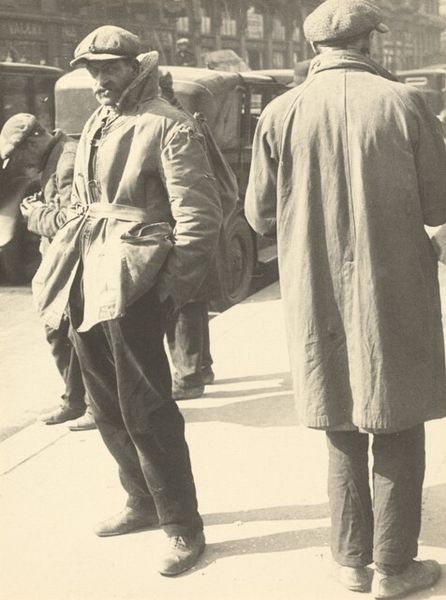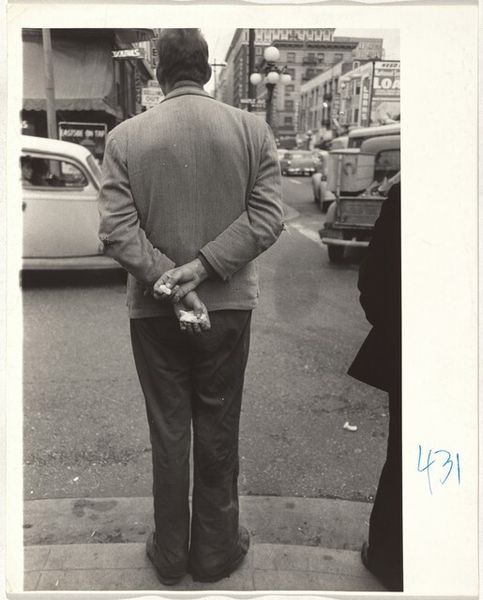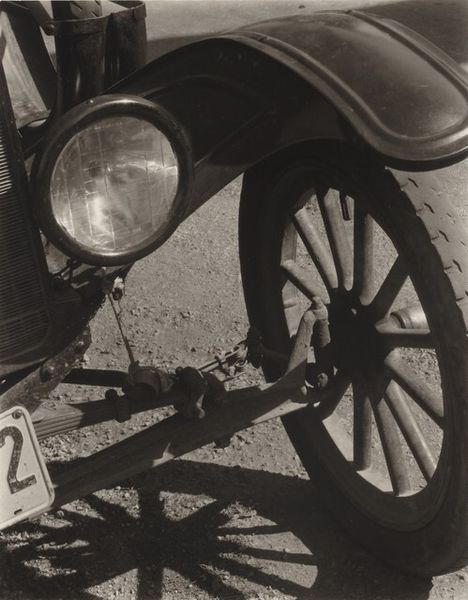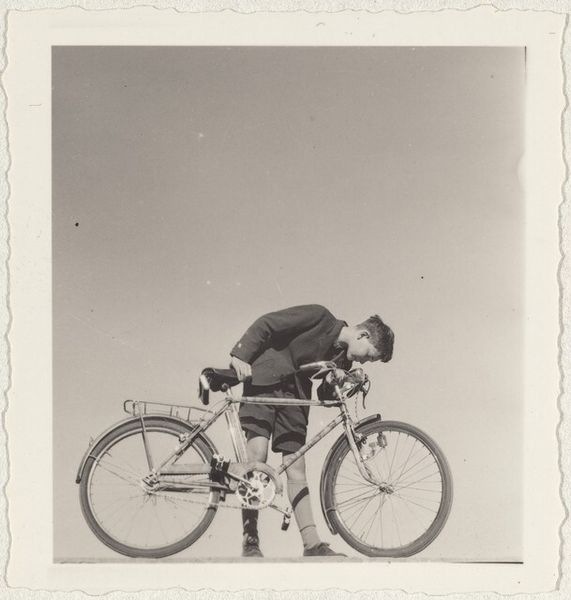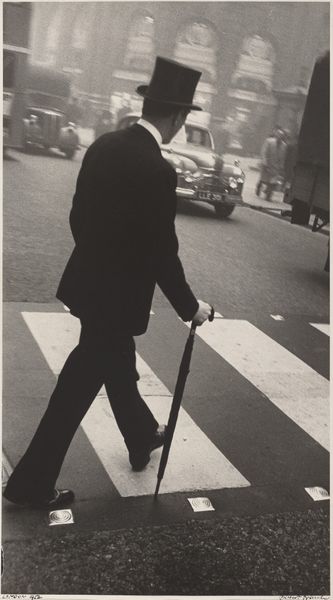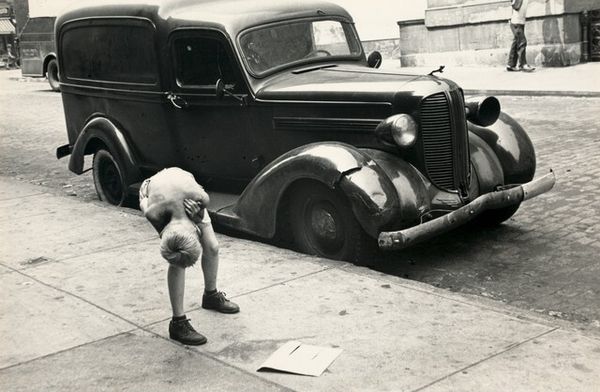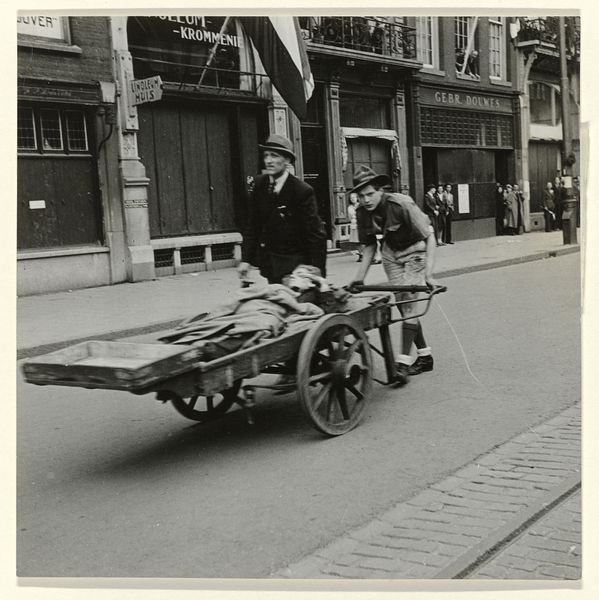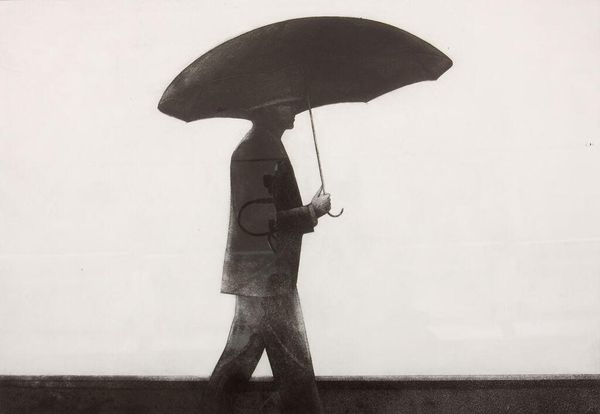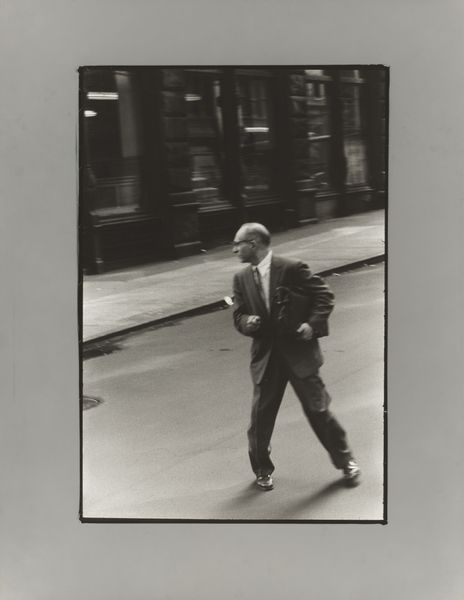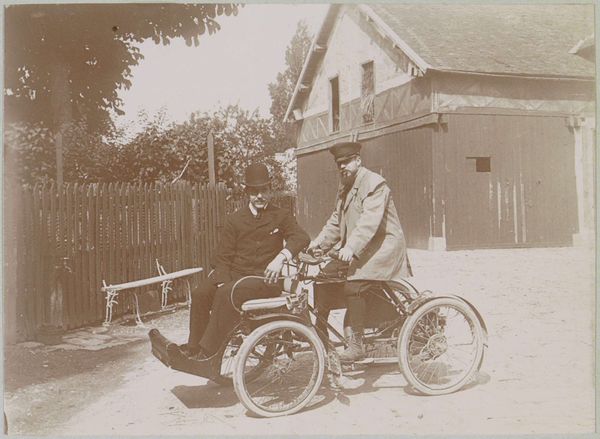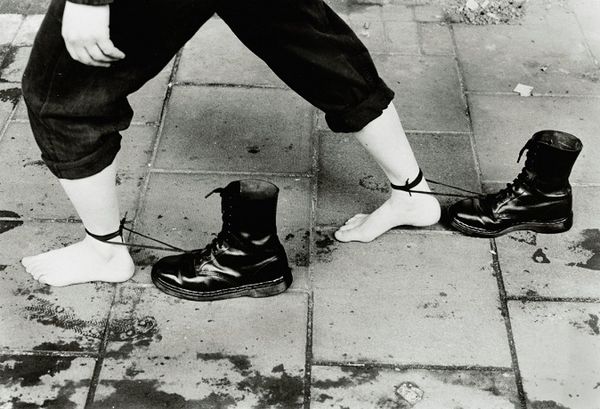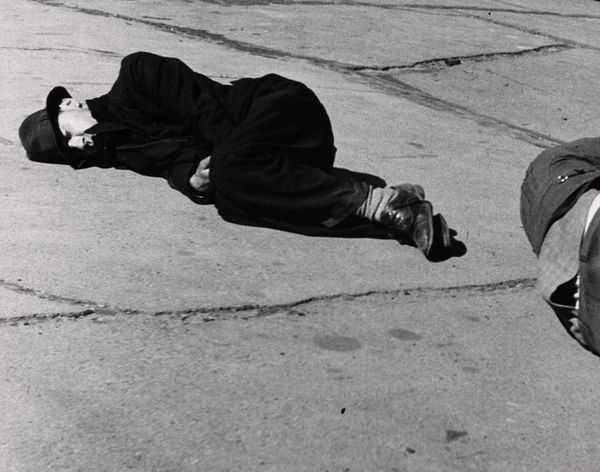
photography, gelatin-silver-print
#
portrait
#
social-realism
#
street-photography
#
photography
#
black and white
#
gelatin-silver-print
#
ashcan-school
#
cityscape
#
realism
Dimensions: image/sheet: 25 × 19 cm (9 13/16 × 7 1/2 in.) mount: 35 × 27.7 cm (13 3/4 × 10 7/8 in.)
Copyright: National Gallery of Art: CC0 1.0
Curator: Dorothea Lange’s gelatin-silver print, "Policeman on street, San Francisco, California," taken in 1934, presents us with an intriguing glimpse into the social fabric of Depression-era America. Editor: There's an undeniable air of authority, and perhaps a touch of weariness, in the figure depicted. He stands with his hands on his hips, a visual representation of power but also of the burdens it carries. Curator: Exactly. Lange, known for her documentary approach, captured moments that spoke volumes about the socio-political landscape. The image embodies aspects of both social realism and street photography, offering insights into the role of law enforcement during that turbulent period. It’s important to acknowledge Lange's work was often entangled with the Farm Security Administration, a New Deal agency; reflecting policies impacting many marginalized communities at the time. Editor: I am intrigued by the license plate on the motorcycle, ‘1934 California.’ It roots the image firmly in a specific place and time, yet the figure of the policeman resonates with a timeless symbolic weight, an archetypal representation of order. Curator: We might unpack what that order represented, and for whom. The policeman's presence signifies not only security but also, potentially, control and the maintenance of a certain status quo. In the 1930s, these ideas weren't necessarily aligned with everyone’s experience. Editor: Looking at those details adds depth. It makes one wonder about his perspective – and those on the street he patrols. What fears or assurances did this figure inspire among those in his gaze? Curator: It's a crucial question. Lange's work, while offering a seemingly straightforward snapshot of reality, also provokes contemplation on the power dynamics at play. Consider this within contexts such as poverty, labor disputes, and racial segregation of the time, to further appreciate these power dynamics. Editor: Absolutely. It underscores the point that even the most seemingly neutral images are, in reality, imbued with a complex interplay of cultural meanings. It makes us question the idea of law as stability, when its symbolism for some may invoke fear. Curator: Ultimately, Lange encourages us to confront uncomfortable truths. What begins as an intriguing photograph reveals a complex historical perspective. Editor: It's a powerful testament to how the camera's lens shapes narratives—or perhaps reveals the multiple narratives already present.
Comments
No comments
Be the first to comment and join the conversation on the ultimate creative platform.

